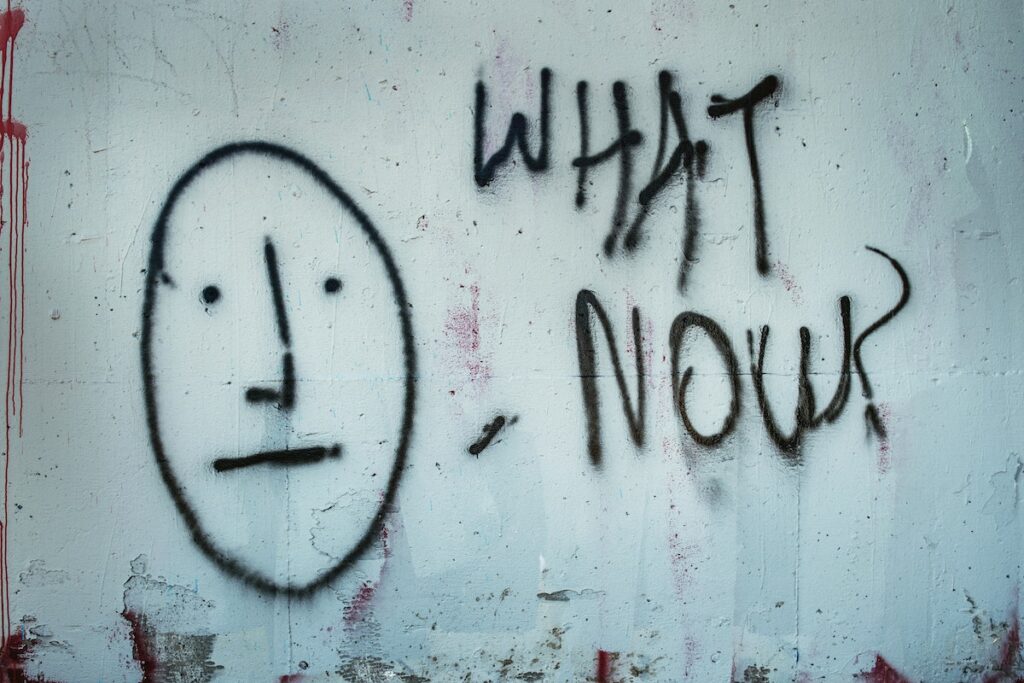
Mood monitoring is generally supposed to be a key skill in the self-management of bipolar disorder. In recent years, attention has been given to how to best use new technologies in order to assist service users in monitoring their mood state.
Mood monitoring for the management of bipolar has traditionally been paper-based, with service users encouraged to use mood-tracking templates, such as the one provided by Bipolar UK (2020). Lately, a plethora of mood monitoring apps have been developed. However, Faurholt-Jepson et al (2016) carried out a systematic review of the evidence for electronic mood monitoring and suggested that their findings were insufficient to conclude that monitoring mood in this way is either beneficial or harmful.
This study arises from the development of the University of Oxford’s True Colours mood-monitoring app. Weekly emails are sent to participants to complete two online self-report questionnaires: the Quick Inventory of Depressive Symptomatology patient-rated version (QIDS) and the Altman Self-Rating Mania Scale (AMS). These aim to capture if and how people experienced depressive and hypomanic/manic symptoms over the preceding week.
Initially respondents were issued with a set of pre-determined questions for mood tracking, but early feedback indicated that respondents wanted to be able to customise the question list. As a result, the app was amended to allow participants to identify their own, personally significant, questions.
Gordon-Smith and colleagues (2020) aimed to explore how True Colours users used the option to generate bespoke questions and to bridge the gap between standardised questions and participants’ qualitative experiences of living with bipolar.

Mood monitoring is routinely recommended to people with bipolar in order to manage their symptoms, but diagnostically significant criteria for mood shifts do not always reflect people’s lived experience of living with bipolar disorder.
Methods
The True Colours study had been running for over 10 years and during this period 36,000 participants have taken part (Goodday, 2020). The aim of the programme was to set up an easy to use system for remotely monitoring mood changes in people with bipolar disorder.
Early feedback from True Colours participants highlighted a desire to answer personalised questions to capture experiential data that was not collected by the QIDS and AIMS. Participants could choose up to 10 questions to answer daily (which enabled capture of rapid mood changes) and 10 questions to answer weekly. The option was added to include bespoke questions, as well as the pre-existing standardised questions.
In applying a qualitative content analysis approach, bespoke questions were read “as open-mindedly as possible” by one researcher and then categorised by interpreted meaning. Consequently, the meaning was reviewed and corroborated by a second researcher. The names of the categories were discussed and agreed by all members of the research team; at this stage – and only this stage – a lived experience expert was involved.
Results
This study reviewed data from 308 individuals (29% of the True Colours cohort) who had actively selected pre-set questions to respond to or generated their own bespoke questions. 70% of participants were female, and the sample was on the older side with a mean age of 50 years. The authors’ best estimates of diagnosis led them to conclude that the majority of participants (54.5%) had lived experience of the DSM-IV criteria for bipolar I, with the second largest group (40.6%) matching the criteria for a diagnosis of bipolar II. The remainder of the sample were thought to have diagnoses of schizoaffective disorder bipolar type, or bipolar not otherwise specified.
Initial categories were grouped into six overarching themes: 1) mental health, 2) behaviour and level of functioning, 3) physical wellbeing, 4) health behaviours, 5) active self-management and 6) interpersonal. Examples of questions submitted by respondents under the six themes were compared against the pre-set questions.
Although respondents did engage with pre-determined questions, many welcomed the opportunity to devise their own. While some of the new questions matched clinical expectations for mood states (for example, tearfulness as indicating low mood, or reduced sleep suggesting hypomania or mania) respondents offered an insight into other signs of shifting mood that standard mood scales do not capture. The authors note that many standardised mood scales automatically view “abnormal mood” as negative, whereas an identified theme in this research is that of burgeoning creativity or artistry as a symptom of elevated mood.
Bespoke questions also allowed respondents to capture very rapid mood fluctuations in way that scales that ask for symptoms “in the past two weeks” cannot (as a rapid cycler, I find that particularly unhelpful, as my mood may change a number of times within a fortnight). Self-generated questions were also able to focus on very specific signs – for example, the pre-set question “During the past week, at what time did I typically go to bed?” was reinterpreted by one respondent as, “How many times this week did I have a daytime nap?”. Here, the quality of sleep is addressed, as well as the quantity; perhaps for this respondent napping in the daytime might be a sign of the increased tiredness and hypersomnia that can occur with low mood.

This research suggests that many people living with bipolar are self-aware, and that allowing people to customise monitoring questions can create a more responsive, personalised approach.
Conclusions
The inference drawn from the findings of this research is that people with bipolar are tracking symptoms of mood fluctuation much more specifically and creatively than traditional mood monitoring scales can capture. The authors posit that gaining a greater understanding of how people with bipolar themselves monitor mood could lead to improved management. This could be achieved by incorporating bespoke questions into remote monitoring.
An interesting conclusion in this paper is the suggestion that two of the most common themes suggested by the data – sleep and physical activity – have the scope to be “objectively” monitored through wearable technology. Although the authors cite a study from 2017 that indicated wearable tech to be “well accepted and tolerated” by people with bipolar, there is anecdotal evidence within the service user/survivor community of wariness around remote monitoring of symptoms. Who would undertake the monitoring, and in what sense is it objective? Who defines the threshold for action, and what action would then be taken? Remote monitoring may be particularly unpalatable for people who experience paranoia as part of their symptom profile.

Using bespoke questions might assist with a more patient-centred approach in which the service user is the expert in their specific lived experience.
Strengths and limitations
As the authors identify, one limitation of this study is the relatively advanced average age of the sample (50) and it is not known whether this approach would benefit younger service users.
From a service user/survivor perspective, the glaring limitation is that only one person with lived experience was included in the research process, and only at the stage of agreeing the six categories of questions outlined in the results section. This research would have been far stronger had it been co-produced, with lived experience researchers able to offer their insight at every stage of the research rather than one academic researcher checking their interpretations with another. This could have been achieved by convening a Lived Experience Advisory Panel (LEAP), or by appointing a paid lived experience researcher to advise on study design, data collection methods and – most crucially – interpretation of bespoke questions. Ideally any service user input would then be recognised by crediting them as a co-author of the paper.

This study could have been strengthened by utilising greater service user involvement rather than relying on one person with lived experience having the opportunity to offer their insight at a specific, rather late, point in the research process.
Implications for practice
From a service user point of view, this study represents a typical case of research confirming something that is already obvious to those with lived experience. It remains a source of frustration within the user/survivor movement that experience is only seen as valid once it has been “discovered” by researchers. This can lead to disenchantment in that the community feels unheard unless its experiences have been rubber-stamped.
While I agree that knowing a service user’s very personal markers for mood monitoring could be of great value in clinical management this would, of course, rely on there being continuity of care. It would be of huge benefit for service users with an on-going relationship with a psychiatrist or care co-ordinator. However, it could be tiring and disheartening for those with sporadic encounters with a changing array of practitioners, continually having to explain dimensions outside the standard diagnostic tools. My feeling is that this would put service users off sharing non clinical markers.

This approach has the potential to improve joint management of bipolar disorder, but only if clinicians are willing to ensure that there is a stable therapeutic relationship of mutual trust.
Statement of interests
The author was enrolled in the True Colours study at its outset, but withdrew before the option to generate bespoke questions was introduced.
Links
Primary paper
Gordon-Smith K, Saunders, K, Savage, J. et al (2020) “Have I argued with my family this week?”: What questions do those with lived experience choose to monitor their bipolar disorder?. Journal of Affective Disorders. 2020.
Other references
Bipolar UK (2020) Mood diary. Retrieved fro: https://www.bipolaruk.org/FAQs/mood-diary [accessed 1/12/2020]
Faurholt-Jepson, M., Munkholm, K, Frost, M., Bardram, K. and Vedel Kessing, L. (2016) Electronic self-monitoring of mood using IT platforms in adult patients with bipolar disorder: A systematic review of the validity and evidence. BMC Psychiatry vol. 20, no. 7
Goodday, S., Atkinson, L., Goodwin, G., Saunders, K., South, M., Mackay, C., Denis, M., Hinds, C., Attenburrow,M., Davies, J., Welch, J., Stevens, W., Mansfield, K., Suvilehto, J. and Geddes, J (2020) The True Colours Remote Monitoring System: A decade of evolution. Journal of Medical Internet Research vol. 22 no. 1
Photo credits
- Photo by Tim Mossholder on Unsplash
- Photo by Celpax on Unsplash
- Photo by Startaê Team on Unsplash

I am quite surprised that the author was unable to overcome their own bias, to the extent they had to inject their own views and devalue the research. I say this as someone with lived experience of both bipolar 1 and having completed a PhD.
Hi David,
My feeling is that Charlotte’s lived experience and her views add a great deal to this blog. I don’t think she devalues the research with her comments, but rather that she highlights limitations by drawing on her experience. For me, this is what a good science blog is – a combination of scientific evidence and lived experience.
Cheers,
André
The irony of your comment is that it exemplifies exactly what you are criticising in your response to the article. Research is a bundled agglomerate of neutralised observations; theory is one thing, yet lived experience is required to ensure that it is grounded in reality and not just in the neutrality of a laboratory.